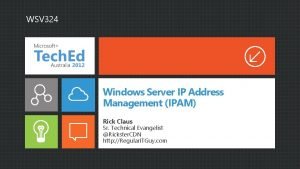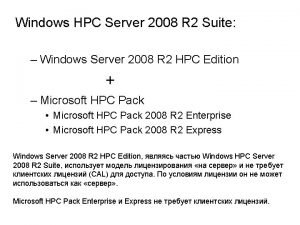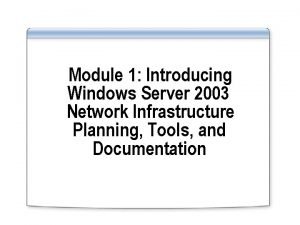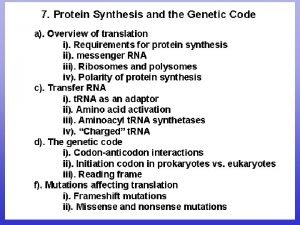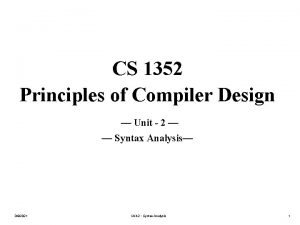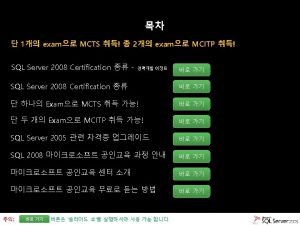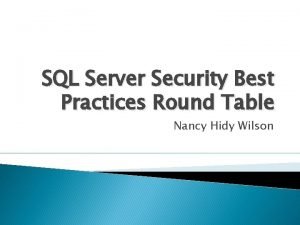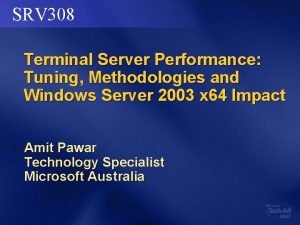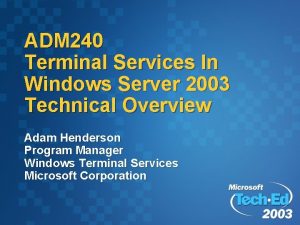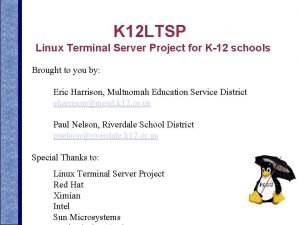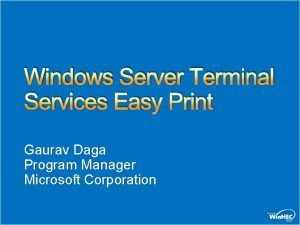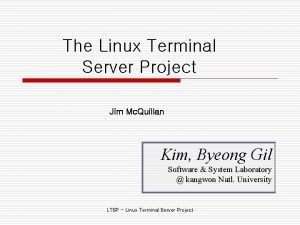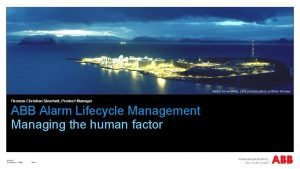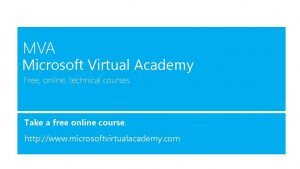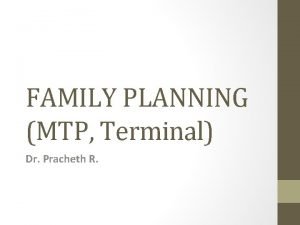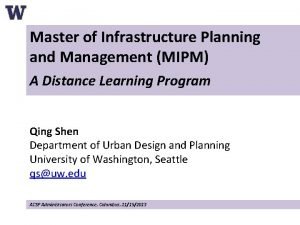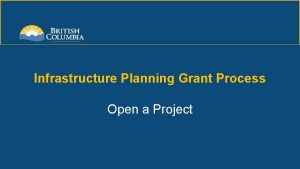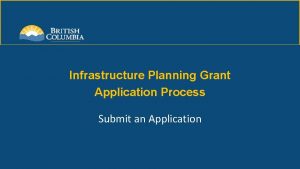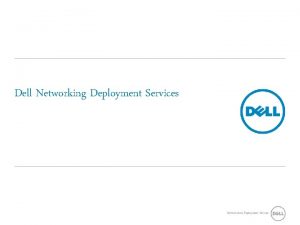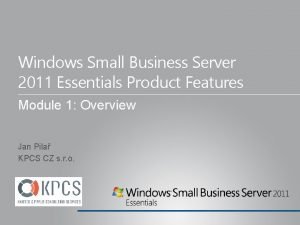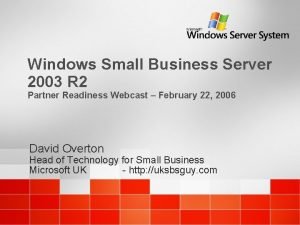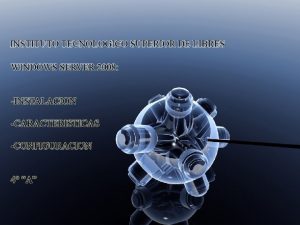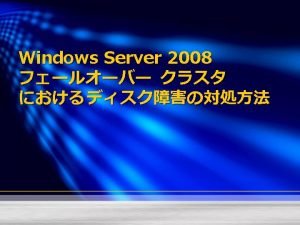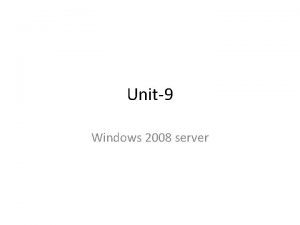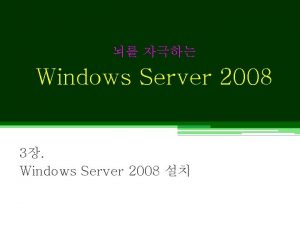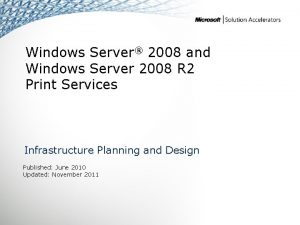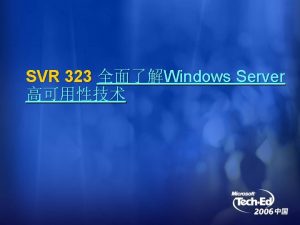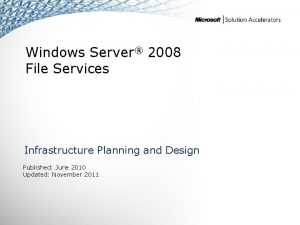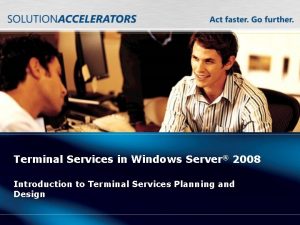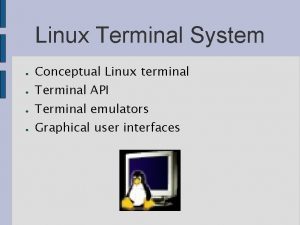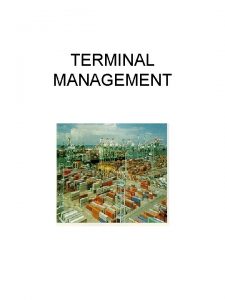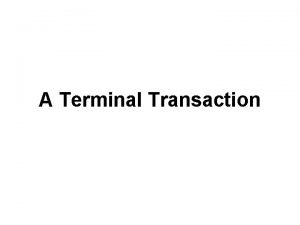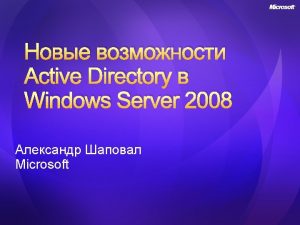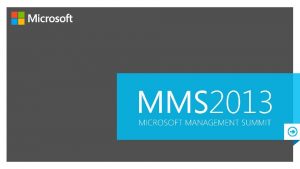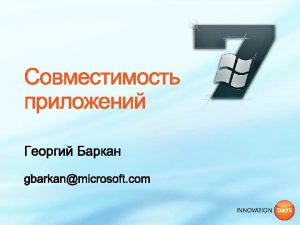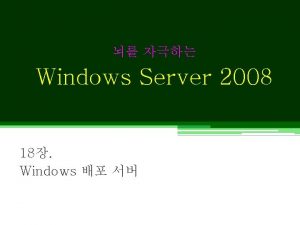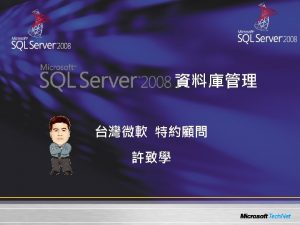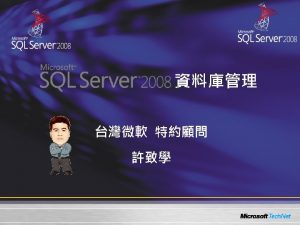Terminal Services in Windows Server 2008 Infrastructure Planning

























- Slides: 25

Terminal Services in Windows Server® 2008 Infrastructure Planning and Design

What Is IPD? Guidance that aims to clarify and streamline the planning and design process for Microsoft® infrastructure technologies. IPD: Defines decision flow Describes decisions to be made Relates decisions and options for the business Frames additional questions for business understanding IPD Guides are available at www. microsoft. com/ipd Page 2 |

Getting Started TERMINAL SERVICES IN WINDOWS SERVER® 2008 Page 3 |

Terminal Services in Windows Server 2008 and the Core Infrastructure Optimization Model Page 4 |

Purpose and Overview Purpose To provide guidance for designing a Terminal Services infrastructure Agenda Terminal Services in Windows Server 2008 features Terminal Services infrastructure design process Page 5 |

Terminal Services in Windows Server 2008 Overview Presentation virtualization segment of Microsoft’s virtualization technologies Enables centralized application management Page 6 |

New Features in Windows Server 2008 TS Remote. App Shortcuts on the Start menu TS Web Access Launch Terminal Services applications through a Web page TS Gateway Remote access without virtual private networks (VPNs) TS Session Broker Load balancing TS Easy Print No more printer driver confusion Page 7 |

Terminal Services in Windows Server 2008 Architecture Page 8 |

Terminal Services Decision Flow Page 9 |

Determine the Scope of the Presentation Virtualization Project Determine the location scope Which locations will be served by this implementation? Determine the application scope Define which applications Terminal Services will host What benefits are desired from presentation virtualization? • Cost • Service levels • Remote access • Centralized management • Application compatibility fix • Platform independence Page 10 | 1 2 3 4 5 6 7 8 9 10

Determine Which Applications to Deliver and How They Will Be Used Gather information about users and applications Numbers of users Applications they run Customizations and requirements 1 2 3 4 5 6 7 8 9 10 Page 11 |

Determine Whether Terminal Services Can Deliver Each Application Examine each application’s capability to be served Possible business issues • Licensing cost and issues • Legal Potential technical issues • Operating system compatibility • Multi-user environment compatibility • Server resource use • Bandwidth use Rank applications by suitability Good candidate Some issues Not suitable for Terminal Services 1 2 3 4 5 6 7 8 9 10 Page 12 |

Appendix B Job Aid 1 2 3 4 5 6 7 8 9 10 Page 13 |

Categorize Users Categorize how users use their computers Helps with factoring the number and size of the terminal servers Heavy user Has specialized applications, uses advanced application features, and spends most of the day at the computer Graphic artist, engineer, developer Normal user Frequent computer use but runs mostly spreadsheets, e-mail client, and word-processing applications Administrative assistant, salesperson, producer Light user Uses the computer infrequently to check e-mail or participate in a workflow Hospital volunteer, baker, assembly line worker Page 14 | 1 2 3 4 5 6 7 8 9 10

Determine the Number of Terminal Server Farms Each server in a farm Same applications installed Configured identically Start with one farm and add more farms only as necessary Conditions that may require the implementation of additional farms: q Large branch offices q Remote users q Software issues q Different roles q Encryption levels q Security considerations q Business q Legal 1 2 3 4 5 6 7 8 9 10 Page 15 |

Map Applications and Users to Farms 1 2 3 4 5 6 7 8 9 10 Page 16 |

Design the Farm Select a form factor for the server 1 2 CPU, memory, disks, disk capacity Determine the number of terminal servers required in the farm Number of users/maximum number of users per server = number of servers needed to handle a maximum load Determine the number of additional servers required for fault tolerance Extra servers for increased user capacity in case a server goes offline Determine the number of servers required for TS Web Access Cannot be shared between farms 3 4 5 6 7 8 9 10 Page 17 |

Step 7 Job Aid 1 2 3 4 5 6 7 8 9 10 Page 18 |

Determine Where to Store User Data Decide user profile policy/storage location Mandatory versus Roaming Storage size and location Different profiles for different farms necessary? • \fileservershare%Farm. Name%%username% Decide user data policy/storage locations Space required Storage location Design storage for user profiles and data Capacity required for all users Performance Fault tolerance Page 19 | 1 2 3 4 5 6 7 8 9 10

Size and Place the Terminal Services Role Services for the Farm Design and place the Terminal Services Session Brokers Place at least one TS Session Broker anywhere there is a geographically separated farm, then add more to provide fault tolerance and handle load Design and place the Terminal Services Licensing Servers Start with one TS Licensing server, add another for fault tolerance, then add more as necessary to handle the load 1 2 3 4 5 6 7 8 9 10 Page 20 |

Size and Place the Terminal Services Role Services for the Farm Design and place the Terminal Services Gateway servers Only needed if users without VPN access require access through a firewall At least one fault-tolerant TS Gateway at each point of access through a firewall Requires a certificate that is either self-signed or trusted certification authority (CA) Can be combined with Microsoft Internet Security and Acceleration (ISA) Server or Microsoft Forefront™ Internet Application Gateway for increased security If uncertain how many role servers are required, a load test can be performed to measure capacity 1 2 3 4 5 6 7 8 9 10 Page 21 |

Job Aid with Role Server Information Added 1 2 3 4 5 6 7 8 9 10 Page 22 |

Secure the Communications Determine the encryption level between client computers and the terminal server 56 bit, 128 bit, Federal Information Processing (FIPS) 140 Determine whether to seal the communications Use Transport Layer Security (TLS)/Secure Sockets Layer (SSL) to prevent a man-in-the-middle attack Determine the CA Determine whether to encapsulate with Hypertext Transfer Protocol over SSL (HTTPS) Require HTTPS Web access so port 3389 can be closed on the firewall. 1 2 3 4 5 6 7 8 9 10 Page 23 |

Conclusion If designed properly, Terminal Services in Windows Server 2008 can save the organization money while increasing security and application availability Planning is key This guide offers major architectural guidance. Refer to product documentation for additional details. All the IPD Guides are available at www. microsoft. com/ipd Page 24 |

Questions?
 Ipam asm
Ipam asm Hpc pack 2008 sdk sp2
Hpc pack 2008 sdk sp2 School planning team organizational structure
School planning team organizational structure 2008 2008
2008 2008 טרנסלציה
טרנסלציה Terminal and non terminal in compiler design
Terminal and non terminal in compiler design Sql server 2008 certification
Sql server 2008 certification Microsoft sql server management studio express 2005
Microsoft sql server management studio express 2005 Microsoft sql server security best practices
Microsoft sql server security best practices Improve terminal server performance
Improve terminal server performance Terminal server 2003
Terminal server 2003 K12 linux
K12 linux Terminal server printer
Terminal server printer Inode 최대 개수
Inode 최대 개수 Statoil terminal server
Statoil terminal server Mcse private cloud and server infrastructure
Mcse private cloud and server infrastructure Microsoft academy free courses
Microsoft academy free courses Terminal method of family planning
Terminal method of family planning Masters in infrastructure planning and management
Masters in infrastructure planning and management Infrastructure planning grant program
Infrastructure planning grant program Application
Application Dell deployment services
Dell deployment services Awsome aws
Awsome aws Microsoft windows small business server 2011 essentials
Microsoft windows small business server 2011 essentials Microsoft windows small business server 2011 essentials
Microsoft windows small business server 2011 essentials Windows small business server 2003
Windows small business server 2003
